Waitaki, Central Lakes, Dunedin - South Otago > Public Hospital Services > Health New Zealand | Te Whatu Ora - Southern >
Orthopaedics - Otago | Southern
Public Service, Orthopaedics
Description
Scoliosis surgery is undertaken at Dunedin Hospital as a tertiary service with patients coming from all the DHBs within the South Island.
The Orthopaedic Service has a catchment area, which covers our population from the Waitaki River in the north, to the Clutha River in the south. We also see Southland patients for specialist areas including spine and foot/ankle.
In patients ward - 3rd Floor, Ward Block, Main Hospital
Outpatient Clinic - 3rd floor, Main Hospital
Pre-admission Clinic - 3rd floor, Main Hospital
Fracture Clinic - Ground Floor, Main Hospital (Cumberland St entrance)
Consultants
Note: Please note below that some people are not available at all locations.
-

Mr Wesley Bevan
Orthopaedic Surgeon
Available at Dunedin Hospital
-
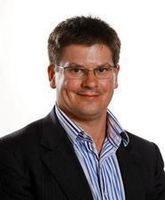
Mr Chris Birks
Orthopaedic Surgeon - Clinical Director
Available at Dunedin Hospital
-

Ms Lizzie Bond
Orthopaedic Surgeon
Available at all locations.
-

Mr Kenan Burrows
Orthopaedic Surgeon
Available at all locations.
-
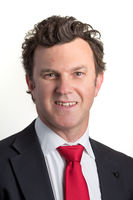
Mr Alan Carstens
Orthopaedic Surgeon
Available at Dunedin Hospital
-
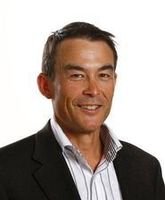
Mr Michael Chin
Orthopaedic Surgeon
Available at Dunedin Hospital, Ōamaru Hospital
-

Mr Carl Chisholm
Orthopaedic Surgeon
Available at Dunedin Hospital
-
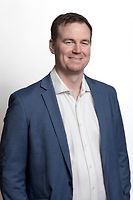
Mr Liam Dunbar
Orthopaedic Surgeon
Available at all locations.
-

Professor David Gwynne-Jones
Associate Professor Orthopaedic Surgeon
Available at Dunedin Hospital
-
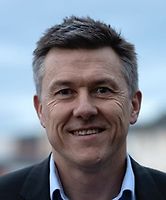
Mr Fraser Harrold
Orthopaedic Surgeon – Joint Clinician with University of Otago
Available at all locations.
-
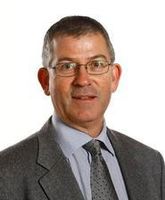
Mr Bruce Hodgson
Orthopaedic Surgeon
Available at Dunedin Hospital
-

Mr Oliver Johnson
Orthopaedic Surgeon
Available at all locations.
-
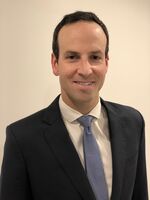
Dr Louis LeBlond
Orthopaedic Surgeon
Available at Dunedin Hospital
-

Dr Sebastian Lippross
Orthopaedic Surgeon - Joint Clinician with University of Otago
Available at all locations.
-

Mr Gary McCoubrey
Orthopaedic Surgeon
Available at Dunedin Hospital
-

Mr John Scanelli
Orthopaedic Surgeon
Available at Dunedin Hospital, Dunstan Hospital, Clyde
-

Dr Shea Timoko-Barnes
Orthopaedic Surgeon
Available at all locations.
Procedures / Treatments
These clinics are run by most orthopaedic departments for patients that have sustained an injury that has already been treated and further follow-up of that injury is required, to monitor progress of a healing bone, check the position of the bone in a cast and to decide when other steps in management such as re-manipulation of fracture, removal of a cast or change of the management plan is required. Often at these fracture clinics x-rays are taken on arrival. Although an appointment time is given, the time to have x-rays, casts removed, other treatments instigated may take several hours. Other appointments will be quick and efficient if these other procedures are not needed.
These clinics are run by most orthopaedic departments for patients that have sustained an injury that has already been treated and further follow-up of that injury is required, to monitor progress of a healing bone, check the position of the bone in a cast and to decide when other steps in management such as re-manipulation of fracture, removal of a cast or change of the management plan is required. Often at these fracture clinics x-rays are taken on arrival. Although an appointment time is given, the time to have x-rays, casts removed, other treatments instigated may take several hours. Other appointments will be quick and efficient if these other procedures are not needed.
These clinics are run by most orthopaedic departments for patients that have sustained an injury that has already been treated and further follow-up of that injury is required, to monitor progress of a healing bone, check the position of the bone in a cast and to decide when other steps in management such as re-manipulation of fracture, removal of a cast or change of the management plan is required. Often at these fracture clinics x-rays are taken on arrival.
Although an appointment time is given, the time to have x-rays, casts removed, other treatments instigated may take several hours. Other appointments will be quick and efficient if these other procedures are not needed.
These are clinics for patients that have been referred by their doctor for an orthopaedic opinion on a specific concern. These clinics are usually attended by a specialist orthopaedic surgeon who will be available to advise on diagnosis and management. Often at the clinics x-rays will be taken, if not already taken and sometime other investigations such as ultrasound scans may be taken.
These are clinics for patients that have been referred by their doctor for an orthopaedic opinion on a specific concern. These clinics are usually attended by a specialist orthopaedic surgeon who will be available to advise on diagnosis and management. Often at the clinics x-rays will be taken, if not already taken and sometime other investigations such as ultrasound scans may be taken.
These are clinics for patients that have been referred by their doctor for an orthopaedic opinion on a specific concern. These clinics are usually attended by a specialist orthopaedic surgeon who will be available to advise on diagnosis and management. Often at the clinics x-rays will be taken, if not already taken and sometime other investigations such as ultrasound scans may be taken.
Clinics for specific parts of the body or specific conditions. Examples of these will be an orthopaedic tumour clinic or a spinal clinic. Here the patients with specific problems are seen by the appropriate doctors and support staff for their special needs.
Clinics for specific parts of the body or specific conditions. Examples of these will be an orthopaedic tumour clinic or a spinal clinic. Here the patients with specific problems are seen by the appropriate doctors and support staff for their special needs.
Clinics for specific parts of the body or specific conditions. Examples of these will be an orthopaedic tumour clinic or a spinal clinic.
Here the patients with specific problems are seen by the appropriate doctors and support staff for their special needs.
For elderly patients joint replacement surgery is commonly required to treat damaged joints from wearing out, arthritis or other forms of joint disease including rheumatoid arthritis. In these procedures the damaged joint surface is removed and replaced with artificial surfaces normally made from metal (chromium cobalt alloy, titanium), plastic (high density polyethelene) or ceramic which act as alternate bearing surfaces for the damaged joint. These operations are major procedures which require the patient to be in hospital for several days and followed by a significant period of rehabilitation. The hospital has several ways of approaching the procedure for replacement and the specifics for the procedure will be covered at the time of assessment and booking of surgery. Occasionally blood transfusions are required; if you have some concerns raise this with your surgeon during consultation.
For elderly patients joint replacement surgery is commonly required to treat damaged joints from wearing out, arthritis or other forms of joint disease including rheumatoid arthritis. In these procedures the damaged joint surface is removed and replaced with artificial surfaces normally made from metal (chromium cobalt alloy, titanium), plastic (high density polyethelene) or ceramic which act as alternate bearing surfaces for the damaged joint. These operations are major procedures which require the patient to be in hospital for several days and followed by a significant period of rehabilitation. The hospital has several ways of approaching the procedure for replacement and the specifics for the procedure will be covered at the time of assessment and booking of surgery. Occasionally blood transfusions are required; if you have some concerns raise this with your surgeon during consultation.
For elderly patients joint replacement surgery is commonly required to treat damaged joints from wearing out, arthritis or other forms of joint disease including rheumatoid arthritis. In these procedures the damaged joint surface is removed and replaced with artificial surfaces normally made from metal (chromium cobalt alloy, titanium), plastic (high density polyethelene) or ceramic which act as alternate bearing surfaces for the damaged joint.
These operations are major procedures which require the patient to be in hospital for several days and followed by a significant period of rehabilitation. The hospital has several ways of approaching the procedure for replacement and the specifics for the procedure will be covered at the time of assessment and booking of surgery.
Occasionally blood transfusions are required; if you have some concerns raise this with your surgeon during consultation.
Osteotomy is the division of a crooked or bent bone to improve alignment of the limb. These procedures normally involve some form of internal fixation, such as rods or plates, or external fixation which involves external wires and pins to hold the bone. The type of procedure for fixation will be explained when the surgery is planned.
Osteotomy is the division of a crooked or bent bone to improve alignment of the limb. These procedures normally involve some form of internal fixation, such as rods or plates, or external fixation which involves external wires and pins to hold the bone. The type of procedure for fixation will be explained when the surgery is planned.
Osteotomy is the division of a crooked or bent bone to improve alignment of the limb.
These procedures normally involve some form of internal fixation, such as rods or plates, or external fixation which involves external wires and pins to hold the bone. The type of procedure for fixation will be explained when the surgery is planned.
A large number of orthopaedic procedures on joints are performed using an arthroscope, where a fibre optic telescope is used to look inside the joint. Through this type of keyhole surgery, fine instruments can be introduced through small incisions (portals) to allow surgery to be performed without the need for large cuts. This allows many procedures to be performed as a day stay and allows quicker return to normal function of the joint. Arthroscopic surgery is less painful than open surgery and decreases the risk of healing problems. Arthroscopy allows access to parts of the joints which can not be accessed by other types of surgery.
A large number of orthopaedic procedures on joints are performed using an arthroscope, where a fibre optic telescope is used to look inside the joint. Through this type of keyhole surgery, fine instruments can be introduced through small incisions (portals) to allow surgery to be performed without the need for large cuts. This allows many procedures to be performed as a day stay and allows quicker return to normal function of the joint. Arthroscopic surgery is less painful than open surgery and decreases the risk of healing problems. Arthroscopy allows access to parts of the joints which can not be accessed by other types of surgery.
A large number of orthopaedic procedures on joints are performed using an arthroscope, where a fibre optic telescope is used to look inside the joint. Through this type of keyhole surgery, fine instruments can be introduced through small incisions (portals) to allow surgery to be performed without the need for large cuts. This allows many procedures to be performed as a day stay and allows quicker return to normal function of the joint.
Arthroscopic surgery is less painful than open surgery and decreases the risk of healing problems. Arthroscopy allows access to parts of the joints which can not be accessed by other types of surgery.
In many cases tendons will be lengthened to improve the muscle balance around a joint or tendons will be transferred to give overall better joint function. This occurs in children with neuromuscular conditions but also applies to a number of other conditions. Most of these procedures involve some sort of splintage after the surgery followed by a period of rehabilitation, normally supervised by a physiotherapist.
In many cases tendons will be lengthened to improve the muscle balance around a joint or tendons will be transferred to give overall better joint function. This occurs in children with neuromuscular conditions but also applies to a number of other conditions. Most of these procedures involve some sort of splintage after the surgery followed by a period of rehabilitation, normally supervised by a physiotherapist.
In many cases tendons will be lengthened to improve the muscle balance around a joint or tendons will be transferred to give overall better joint function. This occurs in children with neuromuscular conditions but also applies to a number of other conditions.
Most of these procedures involve some sort of splintage after the surgery followed by a period of rehabilitation, normally supervised by a physiotherapist.
Website
Contact Details
Was this page helpful?
This page was last updated at 3:30PM on May 14, 2025. This information is reviewed and edited by Orthopaedics - Otago | Southern.

